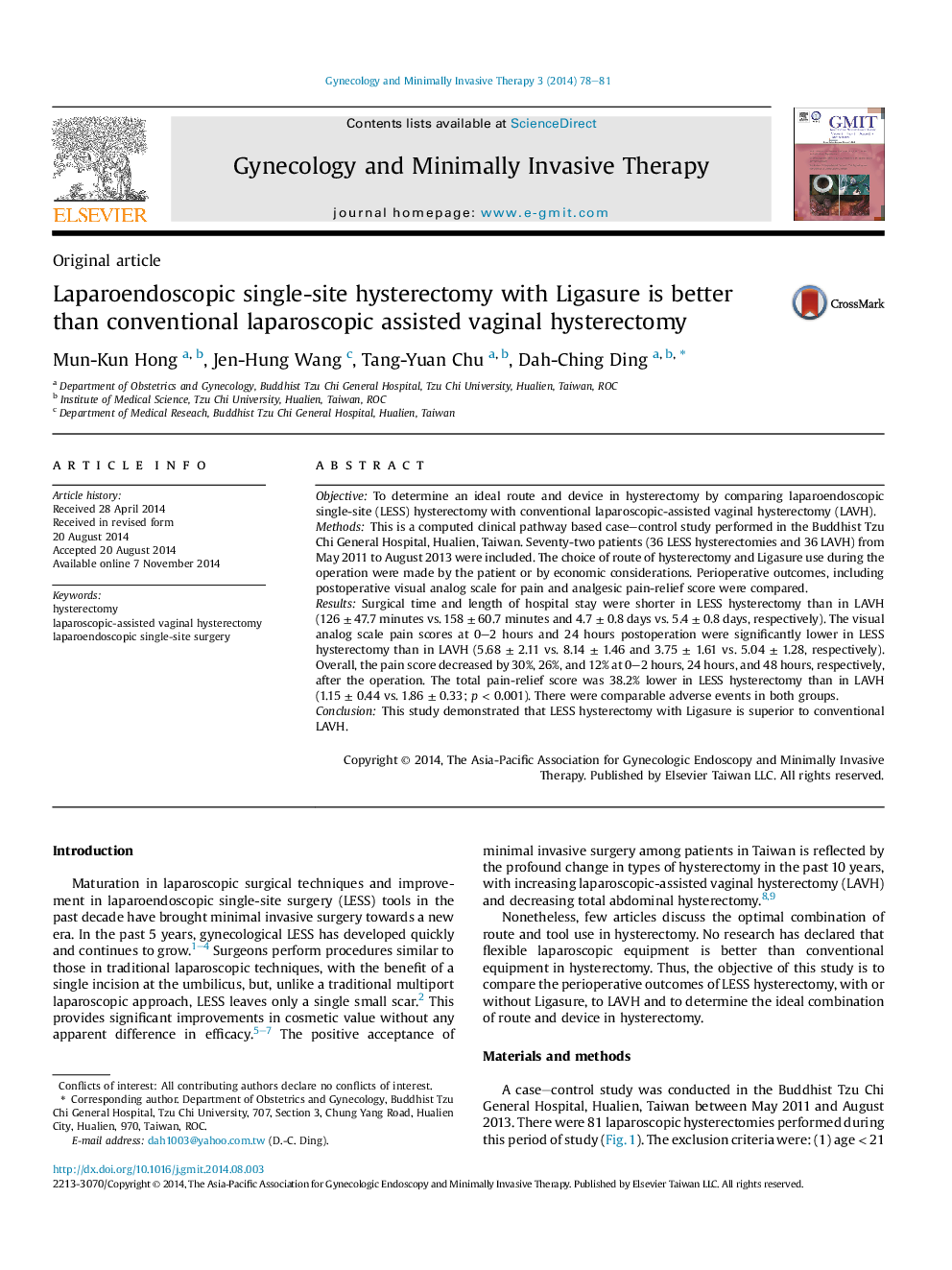| Article ID | Journal | Published Year | Pages | File Type |
|---|---|---|---|---|
| 3951342 | Gynecology and Minimally Invasive Therapy | 2014 | 4 Pages |
ObjectiveTo determine an ideal route and device in hysterectomy by comparing laparoendoscopic single-site (LESS) hysterectomy with conventional laparoscopic-assisted vaginal hysterectomy (LAVH).MethodsThis is a computed clinical pathway based case–control study performed in the Buddhist Tzu Chi General Hospital, Hualien, Taiwan. Seventy-two patients (36 LESS hysterectomies and 36 LAVH) from May 2011 to August 2013 were included. The choice of route of hysterectomy and Ligasure use during the operation were made by the patient or by economic considerations. Perioperative outcomes, including postoperative visual analog scale for pain and analgesic pain-relief score were compared.ResultsSurgical time and length of hospital stay were shorter in LESS hysterectomy than in LAVH (126 ± 47.7 minutes vs. 158 ± 60.7 minutes and 4.7 ± 0.8 days vs. 5.4 ± 0.8 days, respectively). The visual analog scale pain scores at 0–2 hours and 24 hours postoperation were significantly lower in LESS hysterectomy than in LAVH (5.68 ± 2.11 vs. 8.14 ± 1.46 and 3.75 ± 1.61 vs. 5.04 ± 1.28, respectively). Overall, the pain score decreased by 30%, 26%, and 12% at 0–2 hours, 24 hours, and 48 hours, respectively, after the operation. The total pain-relief score was 38.2% lower in LESS hysterectomy than in LAVH (1.15 ± 0.44 vs. 1.86 ± 0.33; p < 0.001). There were comparable adverse events in both groups.ConclusionThis study demonstrated that LESS hysterectomy with Ligasure is superior to conventional LAVH.
